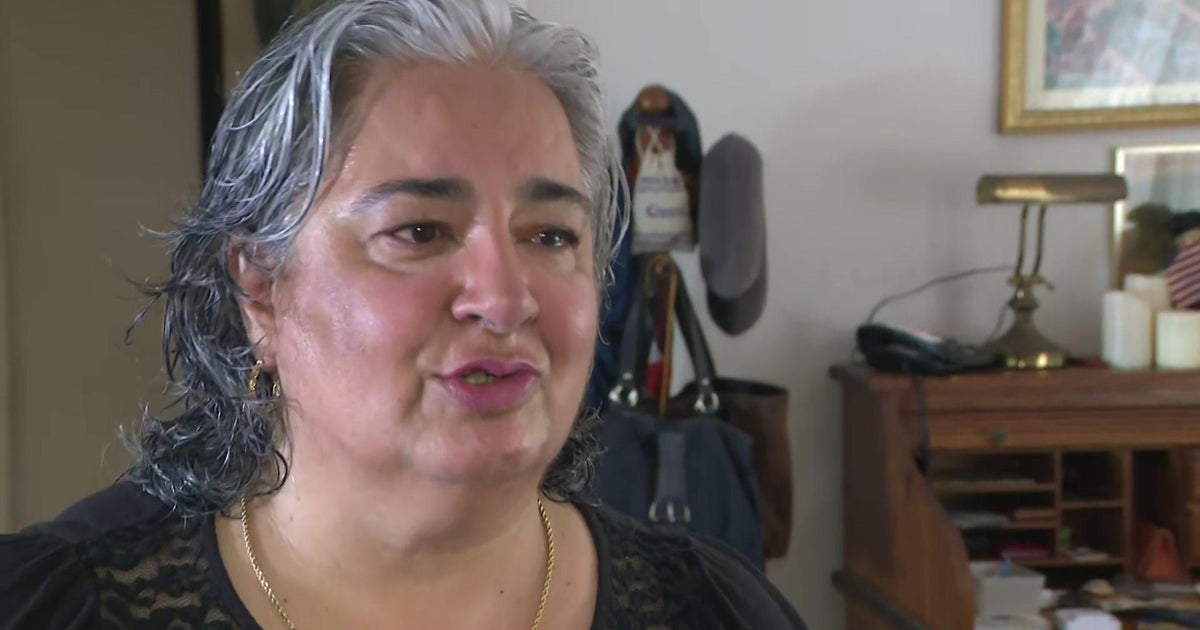Broader Lessons In Obama Immigration Reform
MIAMI (CBSMiami/AP) — The Obama Administration's temporary reprieve for youth living in the country illegally has shown in its first year that anymore immigration reform efforts would require the government to streamline application procedures and provide more information on what documents are needed apply to stay in the United States, according to experts.
Immigrant advocates say the Deferred Action for Childhood Arrivals has worked relatively well. Still, many nonprofits and even some school districts reported serious growing pains as they stretched to accommodate the avalanche of requests related to the application process.
The youth program is open to immigrants between the ages of 15 and 32 who came to the U.S. before they turned 16 and live here illegally, haven't left the country since June 2007 and have had no felonies or serious misdemeanors. They must also have a high school diploma or equivalency, or be currently enrolled in school. A total of about 1.7 million people could be eligible for the program.
The reprieve affects only a fraction of the estimated 11 million people in the country illegally who could be part of larger immigration reform legislation. However, because it's the first major immigration change in many years, experts see it as a template for a more comprehensive, and no doubt more complicated, overhaul.
"DACA represents an important trial run for a larger legalization process, should one result from comprehensive immigration reform," said Tom Wong, assistant professor of political science at the University of California, San Diego, and one of several academics studying the program.
Analyzing data from the initial phase of the program, Wong found possible undercounts of the number of eligible applicants in certain states, a trend that could carry over to a more comprehensive reform. Experts have also identified several hiccups that could be obstacles for broader reform: questions about what paperwork can be used to apply, sometimes long processing times and a lack of resources for local organizations, especially those serving Asian and other immigrants who don't speak English or Spanish.
The reprieve was up and running 60 days after it was announced in June 2012, and nearly 600,000 people have applied. DHS Spokesman Peter Boogaard cited the program as an example of the administration's ability to quickly and successfully implement effective large-scale immigration programs.
About three-quarters of applicants have been approved. U.S. Citizenship and Immigration Services, the agency overseeing the program, is mostly self-funded through processing fees, which officials say allows it to keep up with demand.
The U.S. Senate passed a major immigration reform bill earlier this year that would include a loan to the immigration agency to help process a larger number of applicants, an acknowledgement that more processing muscle would be needed. Speaker John Boehner recently said the House will not take up a comprehensive bill this year.
One of the biggest initial challenges of the reprieve was confusion over what documents were acceptable to show continued residency. USCIS was initially vague on documentation for this requirement, but within a few months of the program launch clarified that school and hospital records and utility bills would be accepted.
Because many employers are wary about acknowledging they've hired people in the country illegally, many youths — especially those out of school — sought alternative methods to prove residency, such as doctor visits or social media activity.
"In California, school systems were overloaded with transcript requests. People wanted copies of their leases from landlords, of their health records. Every part of society was triggered," said Marielena Hincapie, head of the National Immigration Law Center.
The Los Angeles Unified School District was so overwhelmed it created a central application form and added two new staffers dedicated to such requests. Advocates say other school districts and local governments have been less proactive.
California, Texas, Illinois, New York and Florida had the highest numbers of applicants, and Mexico was the most common country of origin, according to government data through August of this year. Analysis of the data also shows Indiana, Georgia and North Carolina appear to have a higher rate of applicants than states with larger immigrant populations.
Wong says several factors may be at play, including potential undercounts of the number of immigrants in states like Georgia, or even over-counts of those eligible in states like California. Should a broader reform pass, regions with newer immigrant communities may need more resources.
The Mexican government's cooperation — it quickly provided youth with necessary documents like birth certificates — is also something the U.S. should encourage other countries to emulate should broad reform occur, experts say.
Early cases have been resolved in an average of three months, while others have taken half a year or longer. Advocates say the government should plan for bottlenecks from applicants with more complicated situations.
Delays can be life altering for applicants, but they can also impact the nation's ability to hold on to talented people in the workforce.
Colombian native Juan Gomez was a star student whose parents were deported when he was a teenager. He won a scholarship to Georgetown University and received a temporary work visa to join JP Morgan Chase.
Gomez applied for deferment in January, but his case was still undecided when his work visa ran out. Unable to work and tired of living in legal limbo, Gomez left the country in August for a top Brazilian finance firm in Sao Paulo.
"I immigrated to Brazil with Colombia documents, but I will always feel like an American," he said in a phone interview. "When I close my eyes, I still imagine myself walking the Brooklyn Promenade."
Last month, Gomez received notice the government planned to deny his request. The reason: He was no longer in the country.
Michael Petrucelli, a former acting director at USCIS, believes the private sector could also play a significant role in the application process. His company, Clearpath, is piloting an online tool he compares to TurboTax, which seeks to help those with simple cases fill out the forms. If and when Congress decides to address the rest of the 11 million people living in the country illegally, Clearpath plans to be ready.
"Getting a glimpse into the potential future is pretty daunting" he said. "It's a great reason to look at whether you have effective processes in place now."
TM and © Copyright 2013 CBS Radio Inc. and its relevant subsidiaries. CBS RADIO and EYE Logo TM and Copyright 2013 CBS Broadcasting Inc. Used under license. All Rights Reserved. This material may not be published, broadcast, rewritten, or redistributed. The Associated Press contributed to this report.



